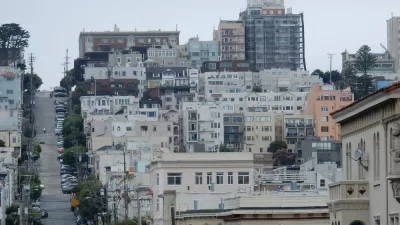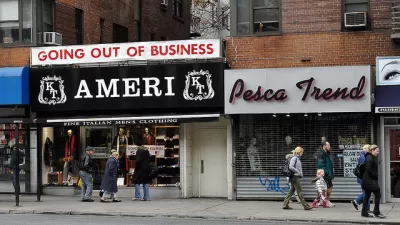Less than 3 percent of properties potentially subject to a new vacancy tax were filed as vacant in the last year, but empty storefronts in the city persist.

According to a San Francisco Chronicle article by Roland Li and Susie Neilson, a vacancy tax meant to encourage commercial landlords to rent out empty storefronts is yielding little revenue in its first year, with “only 2.6% of around 2,800 property parcels that were potentially subject to the tax … listed as vacant by tax filers for more than 182 days in the year.”
Amanda Fried, chief of policy and communications at the Office of the Treasure and Tax Collector, told the Chronicle, “This is not the audited information. This is not how many vacancies exist.”
The tax, passed in 2020 but put on pause until 2022 due to the Covid-19 pandemic, “is $250 per foot of a property’s outdoor street frontage for the first year, rising to $500 per foot in the second year of vacancy and $1,000 per foot in the third year.”
Supervisor Aaron Peskin, who sponsored the measure, “previously said the goal of the tax was to change landlord behavior and make them more willing to rent out spaces, rather than raise money.”
More recently, the city also passed a vacancy tax on residential properties, which real estate groups have sued to block.
FULL STORY: S.F. started taxing vacant storefronts. Here’s why only 74 owners and tenants have paid so far

Alabama: Trump Terminates Settlements for Black Communities Harmed By Raw Sewage
Trump deemed the landmark civil rights agreement “illegal DEI and environmental justice policy.”

Planetizen Federal Action Tracker
A weekly monitor of how Trump’s orders and actions are impacting planners and planning in America.

The 120 Year Old Tiny Home Villages That Sheltered San Francisco’s Earthquake Refugees
More than a century ago, San Francisco mobilized to house thousands of residents displaced by the 1906 earthquake. Could their strategy offer a model for the present?

Ken Jennings Launches Transit Web Series
The Jeopardy champ wants you to ride public transit.

BLM To Rescind Public Lands Rule
The change will downgrade conservation, once again putting federal land at risk for mining and other extractive uses.

Indy Neighborhood Group Builds Temporary Multi-Use Path
Community members, aided in part by funding from the city, repurposed a vehicle lane to create a protected bike and pedestrian path for the summer season.
Urban Design for Planners 1: Software Tools
This six-course series explores essential urban design concepts using open source software and equips planners with the tools they need to participate fully in the urban design process.
Planning for Universal Design
Learn the tools for implementing Universal Design in planning regulations.
Clanton & Associates, Inc.
Jessamine County Fiscal Court
Institute for Housing and Urban Development Studies (IHS)
City of Grandview
Harvard GSD Executive Education
Toledo-Lucas County Plan Commissions
Salt Lake City
NYU Wagner Graduate School of Public Service





























